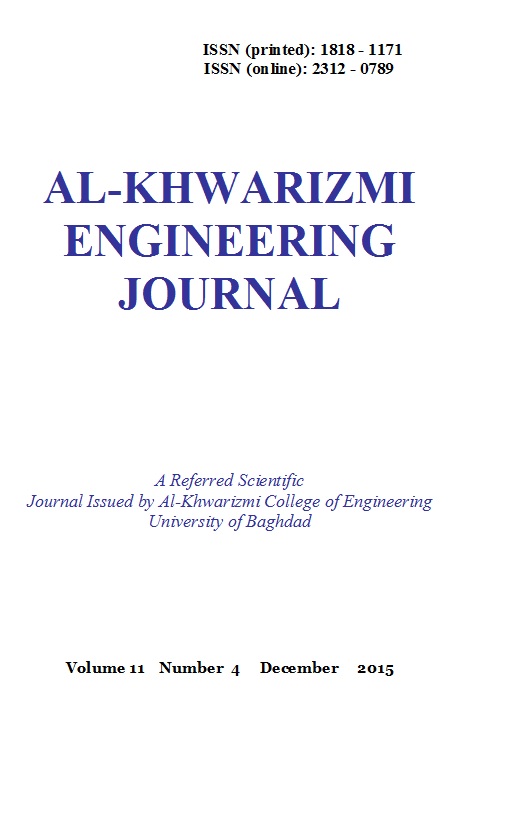Modeling of Mass Transfer Coefficient in Rotating Biological Contactor with Perforated Discs (RPBC)
Keywords:
Rotating biological contactor, Mass transfer coefficient, Wastewater treatment.Abstract
Abstract
In order to make an improvement associated with rotating biological contactor (RBC), a new design of biofilm reactor called as Rotating perforated disc biological contactor (RPBC) was developed in which the rotating discs are perforated. The transfer of oxygen from air to wastewater was investigated. Mass-transfer coefficient (KLa) in the liquid phase was determined by measuring the rate transfer of oxygen. A laboratory scale of (RPBC) consisted of a semicircular trough was used with a working capacity of 40 liters capacity of liquid. Synthetic wastewater was used as a liquid phase, while air was used as a gas phase.
The effects of many parameters on the liquid phase mass transfer coefficient (KLa) were investigated. These parameters are; the disc rotational speed (N), the pore diameter (d) and clearance between the discs(C). It was found that the value of KLa was increased as the rotation speed (N) increased, and as the diameter of the pores in the disc (d) increased. While the values of (KLa) was decreased continuously with increasing the clearance(C). Suitable correlation was developed for estimating mass transfer coefficient (KLa) in this type of bioreactor.
Keywords: Rotating biological contactor, Mass transfer coefficient, Wastewater treatment.
Downloads
Downloads
Published
Issue
Section
License
Copyright: Open Access authors retain the copyrights of their papers, and all open access articles are distributed under the terms of the Creative Commons Attribution License, which permits unrestricted use, distribution, and reproduction in any medium, provided that the original work is properly cited. The use of general descriptive names, trade names, trademarks, and so forth in this publication, even if not specifically identified, does not imply that these names are not protected by the relevant laws and regulations. While the advice and information in this journal are believed to be true and accurate on the date of its going to press, neither the authors, the editors, nor the publisher can accept any legal responsibility for any errors or omissions that may be made. The publisher makes no warranty, express or implied, with respect to the material contained herein.












